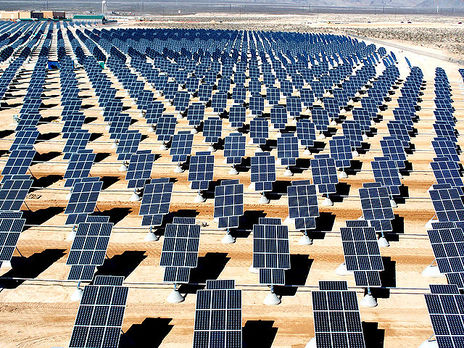Practices of Solar Energy: Traditions from Past to Manipulation in Future

Since the life on Earth formed, every living organism that walks, moves or just grows relies on sun. From plants, depending upon sun’s rays for photosynthesis to humans, relying on sun’s energy for their daily activities, everything on this Earth is dependent upon Sun. Not until recently, humans started trying to harness the solar energy more effectively by utilizing the photo-voltaic effect. Even though, the breakthrough was done in 1800s-1900s, more advanced technology has been updated in same subject up until now. Albeit, we have been using other futile method to harness solar energy before 1800s.
Traditions of Tapping by Crude Means
Humans has been utilizing solar energy from its host star, sun, from as far as 7th century, using the science of lens, to burn organic matter using magnifying lens and focusing the sun’s ray. Moreover, Greeks and Romans also used the similar technology in war strategy, burning enemies’ ship. Similarly, homes and bath house used the same technology to heat water tanks.
Evolution of Solar Panels
The photovoltaic effect was discovered by scientist Edmond Becquerel by experimenting with electrolytic cells: electricity was produced by exposing the cells to the sunlight. Eventually, in 1876, William Grylls Adams, a professor at King’s College London and his student, used selenium to convert light into electrical energy. In 1883, New York Inventor Charles Fritts created first solar cell by coating selenium with thin layer of gold. They were used in making world’s first solar array, albeit due to its low efficiency of just 1%, adoption on a wild scale was disbanded due to expensive material cost.
In early 1900s, Albert Einstein published first theoretical work elucidating the photovoltaic effect explaining that light contained packets of energy he called “light quanta”. Using the same work, in 1950s, technology was developed to convert the energy radiating from sun directly into electricity using first silicon photovoltaic cells, or what we call today, solar panels having an efficiency of 4%. One of the first uses of a solar panel was on the Vanguard I space satellite launched in 1958. From then, various research on solar panels were found to be done drastically increasing the efficiency and changing other physical properties of classical PV cells used for energy harvesting of sun. As much as 16% of efficiency was achieved during 1960 by Hoffman Electronics in 1960.

Modern Exploitation
Nowadays, the efficiency of PV cells in harnessing energy has rose up to as much as 15-20% in commercial PV cells to 40% by using multi-junction concentrator solar cells. More and more researches are being done and various breakthrough are being made in current scenarios. Due to uprising of global warming in recent time many governmental and non-governmental organizations are looking into renewable energy resources with minimum or no after-waste, harnessing solar energy as much efficiently as possible and availability even in remote places has been prioritized.
Many interspace travelling spaceships, satellites, telescopes, probes, robots and so on have been using PV cells for operating purposes due to free and convenient availability of photons all over the solar system. Apart from extra terrestrial missions, a huge portion of energy is also being harnessed from sun to maneuver the electrical appliance: every year more than 20% is increased in using PV cells in order to generate electricity.

Currently, major market of PV cells market is dominated by wafer silicon-based modules where high purity and high-quality silicon is required. So, research for other materials instead of high quality and high purity silicon are being studied. Such ‘second generation’ solar cells of thin film absorbers such as Cadmium telluride (CdTe) are being extensively studied. CdTe is a direct gap thin film compound semiconductor so it is 100 times more absorbing than Silicon. Also, the cost of CdTe absorber layer is much lower cost than Silicon. This type of PV cells has 5-10% market currently.
As most of the sun’s ray is incident upon the side of the building most of the photons that could have been asserted to generate electricity is wasted. However, due to current physical appearance of solar panel adjusting them to side of building instead of glass is not possible for various reasons, so, a transparent solar cell to harness the photons incident upon the side of building without hindering the natural lights to enter in the building is being researched.
Manipulations to Capture Sun’s Solar Energy
Sun hits Earth with enough energy in about 40 minutes in Earth’s landmass to power the planet for a whole year. However, with the current technology it is impossible to harness with such efficiency. Albeit in the future, the occurrence of such a technology to harness such energy is feasible with enough resources. Currently, humans are not able to convert even 1% of total sun’s energy received by Earth.

As per Kardashev’s scale there are 5 types of civilization in the whole universe which is classified by use of energy harnessed by the host. With current condition, our civilization would not even rank Type-I; Type-I is the civilization to use and store all of the energy available on its planet. It is classified as Type 0.73. However, for being Type-II we need to harness whole of the energy emitted by sun i.e. 3.9 x 1026 watts. And for that purpose, a galactical superstructure known as Dyson Sphere has to be created to harness and store whole of the sun’s energy. A superstructure would be in itself pose a great challenge but for further advancement and harness the sun’s energy would be eventual outcome. Manipulating the sun’s ray and using that to our advantage would be beneficial for sustainable development.
There are more steps ahead in terms of manipulating and using solar energy. Thus, the future of solar energy is very promising and prominent not just for day to day activity but also for the advancement of human civilization.




